By Lucy Anderson, September 2016
"Today somebody in the village has died" whispered Mrs Nga as we began teetering along a narrow trail that wound through vast mudflats to the fishing ground.
In the sleepy province of Bến Tre at the mouth of the mighty Mekong River, the passing
of one of the local elders wasn’t recognised by the ringing of bells or the gathering of flowers. But rather in this community’s unique currency; the currency of clams.
Mrs Nga, a petite woman in her fifties with a disarming smile and an air of determination, went on to explain that the sombre occasion had prompted an unusual event. A closed area of the clam fishery had been temporarily opened to allow family members of the deceased to gather two crates of clams as offerings for the wake.
The situation illustrated the close connection between the community and the fishery here in Southern Vietnam.
But it hasn’t always been this way. Until the early 2000s, the government’s fishery management initiatives failed to incentivise local fishers to harvest clams sustainably.
Under increasing pressure to boost production, immature clams were collected before they reached a productive size, while a lack of environmental understanding among fishers saw mangrove shoots hacked down as they sprouted through the mud.
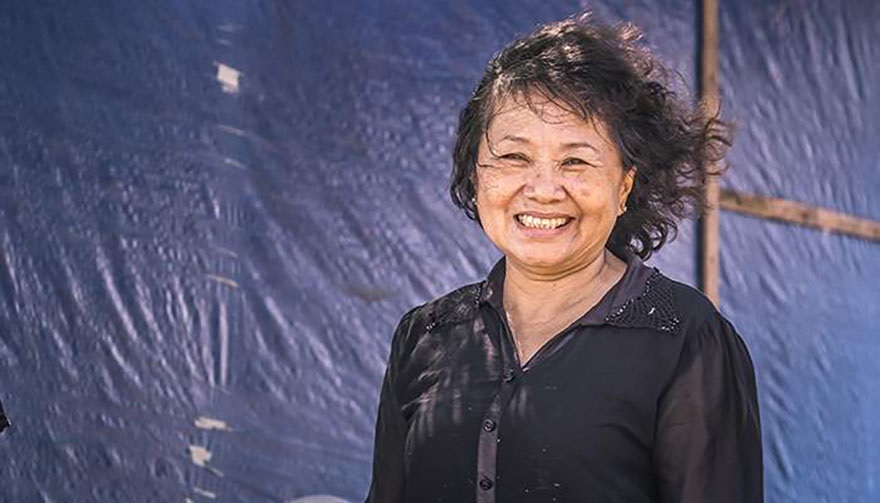
Mrs Nga, Fisheries Director in Bến Tre
Community collaboration
Over the past decade, through gentle persuasion and careful education, Mrs Nga has steered the fishery onto a new, sustainable course.During her six years as the region’s Fisheries Director, she’s been instrumental in establishing an effective cooperative-based management system that sees community members collaborate with one another as equal shareholders to assure the future of the fishery.
The formation of eight fishing cooperatives comprising over 9000 community members has allowed villagers to take ownership of their marine resources.
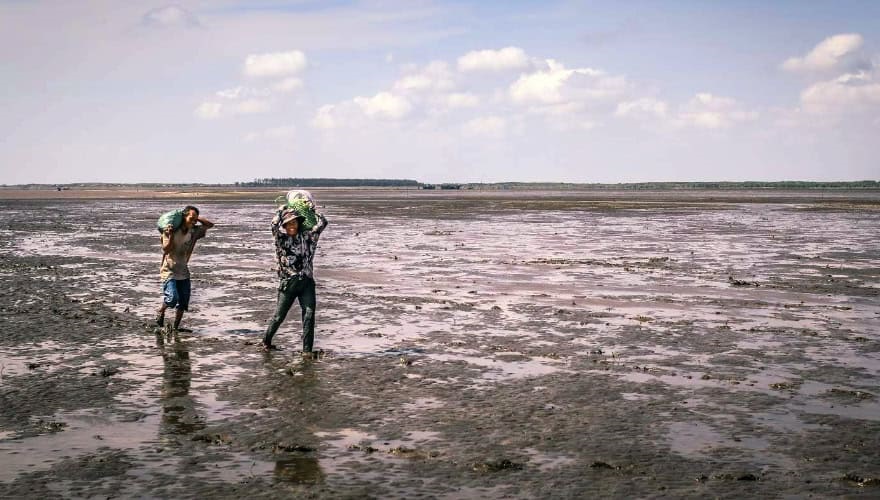
Clam Committee
A locally elected 'clam committee' now consults the local government to agree fishery management strategies each year. Newfound motivation has also seen fishers attend training workshops on environmental management.Using only their hands and small hand-rakes, each cooperative takes fortnightly turns to gather the clams, which lurk inches below the surface of the mud at low tide.
Each member of a cooperative is given a ‘ticket’ or quota, detailing the number of clams they are allowed to harvest. Around a third of members catch their own quotas while the very old and young sell their tickets to other members for mutual benefit.
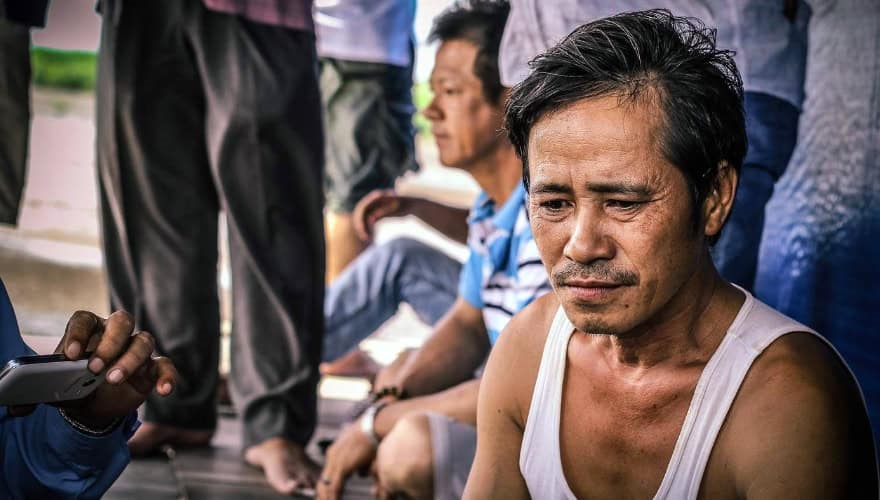
Protection, productivity and profit
As we reached the fishing ground, Mrs Nga shrieked with delight as she felt the texture under her feet change.
The smooth, velvety mud had become sharp and rocky, revealing the treasures lying beneath. After a short rummage in the ground with her toe, Mrs Nga produced a handful of white clams.
"In order to become MSC certified, fishers had to begin measuring the clams they harvested, and returning any undersized individuals to the mud to grow bigger" said Mrs Nga.
"As a result of this, and the temporary closure of different areas of the fishing ground to allow clams to grow, we have noticed big increases in the abundance of clams."
Once collected, the clams are hauled aboard boats and transported to the city of Bến Tre where they are processed, vacuum packed and frozen within a matter of hours.
MSC certification has helped this once-domestic fishery to export clams to markets in Europe where demand for ecolabelled, shell-on clams minimises processing time, offers higher profits and has led to a fivefold rise in wages for the cooperative members.
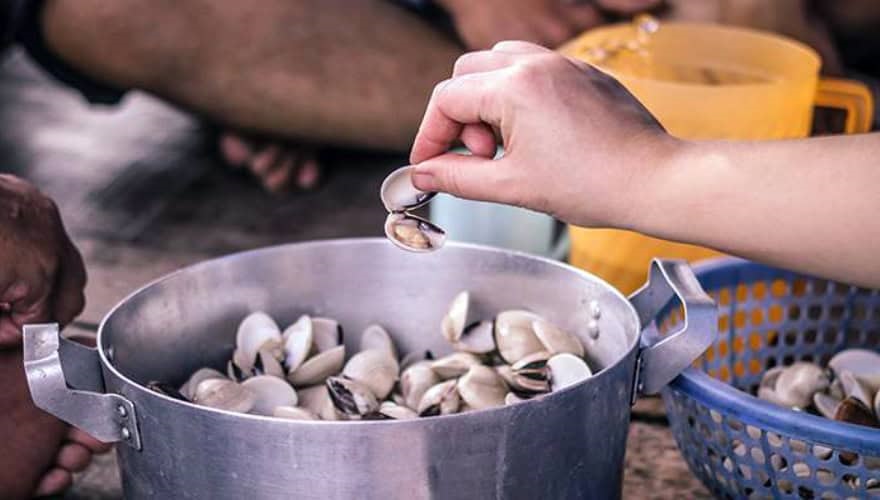
Mangroves are now fiercely protected and a replanting initiative has been successfully completed adjacent to the fishery.
Some challenges along the way
Plans to establish a local school bus and a clam processing factory on-site fell short "Widespread clam deaths in 2006 meant there was insufficient profit to go through with those plans" explained Mrs Nga.
The clam deaths she mentions are caused by temperature 'shock' and are an inevitable consequence of climate change in this environmentally sensitive species.
The proposed upstream development of hydroelectric dams and by the diversion of water to surrounding shrimp farms also threaten to disrupt the future hydrology of the Ben Tre mudflats, with as yet uncertain impacts.
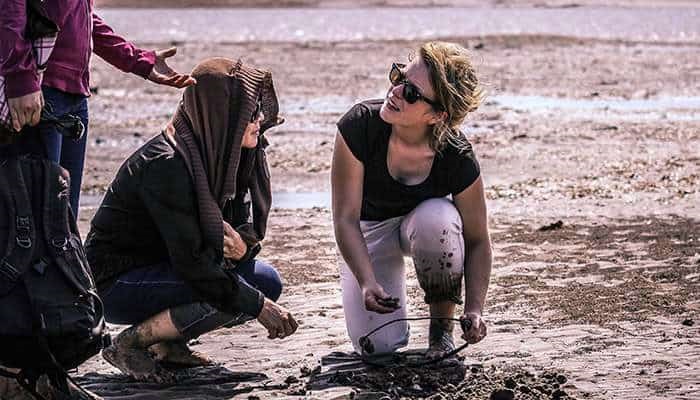
Lucy Anderson, former MSC Science Communications Manager and article author, with community members.
Up in the watch tower, the young children of one of the fishers greeted Mrs Nga with excitement. Families stand to gain from the fishery, receiving extra quotas for each child born.
Yet the quota system has also served as an unconventional form of population control as families with more than two children see their benefits cut.
Thanks to the efforts of Mrs Nga, and the pride the fishing communities are taking in implementing more environmentally conscious management strategies - the future is looking bright for the next generation in this sleepy corner of Vietnam.




